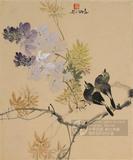唐曲阜文宣王廟記 軸
推薦分享
資源連結
連結到原始資料 (您即將開啟新視窗離開本站)後設資料
- 資料識別:
- 故帖000103N000000000
- 資料類型:
- 類型:書法、搨碑、墨拓
- 型式:文字
- 出版者:
- 數位化執行單位:國立故宮博物院
- 格式:
- 本幅 134.5x74.1公分、全幅 82.4公分
- 語言:
- 漢文
- 關聯:
- 文宣王廟即指孔廟,因唐開元廿七年,追諡孔子為文宣王,以示尊崇。咸通年間,由於農作欠收經年,曲阜文宣王廟老舊失修,孔子卅九世孫孔溫裕有心復其舊觀,奏准出個人薪資加以修繕整理。事竣後賈防撰文記其經過附及孔溫裕蒙獲嘉奬始末,刻石流傳,原石現存於山東曲阜孔廟。碑文及碑額均作楷書,筆畫瘦勁,有柳公權書法清朗的風貌,可以略窺晚唐楷書的趨向。 (20110407)&* The Temple of King Wenxuan refers to Confucius; in 739 Confucius was posthumously titled King Wenxuan (Propagating Culture) as a sign of respect. In the Xiantong reign (860-873), years of poor harvest led the Temple of King Wenxuan in Qufu to disrepair. A 39th-generation descendant of Confucius, Kong Wenyu, wanted to restore its former glory and received permission to use his salary to pay for it. Afterwards, Jia Fang composed a record of the event and Kong’s reward, which was engraved in stone. The stele is now at the Temple of Confucius in Qufu, Shandong. Both stele text and head are in regular script with thin and powerful strokes. With the purity of Liu Gongquan’s calligraphy, it offers a glimpse at late-Tang regular script trends.(20110407)
- 管理權:
- 國立故宮博物院
授權聯絡窗口
- 國立故宮博物院圖像授權、出版授權、影音資料授權-申請流程說明
http://www.npm.gov.tw/zh-TW/Article.aspx?sNo=03003061






